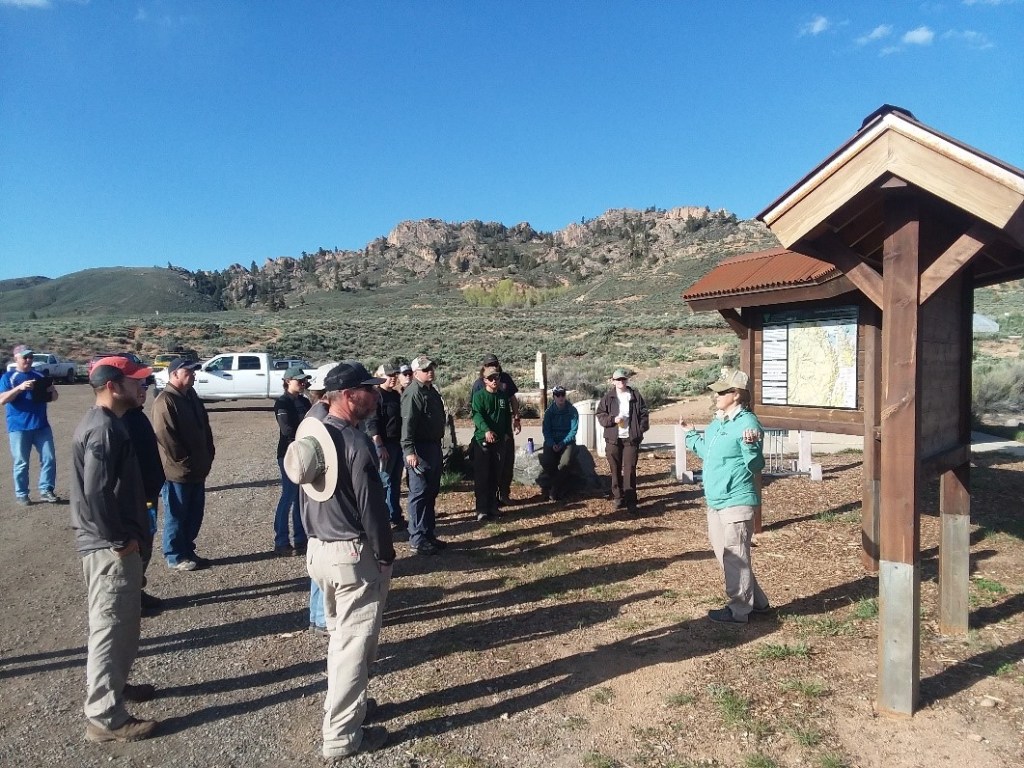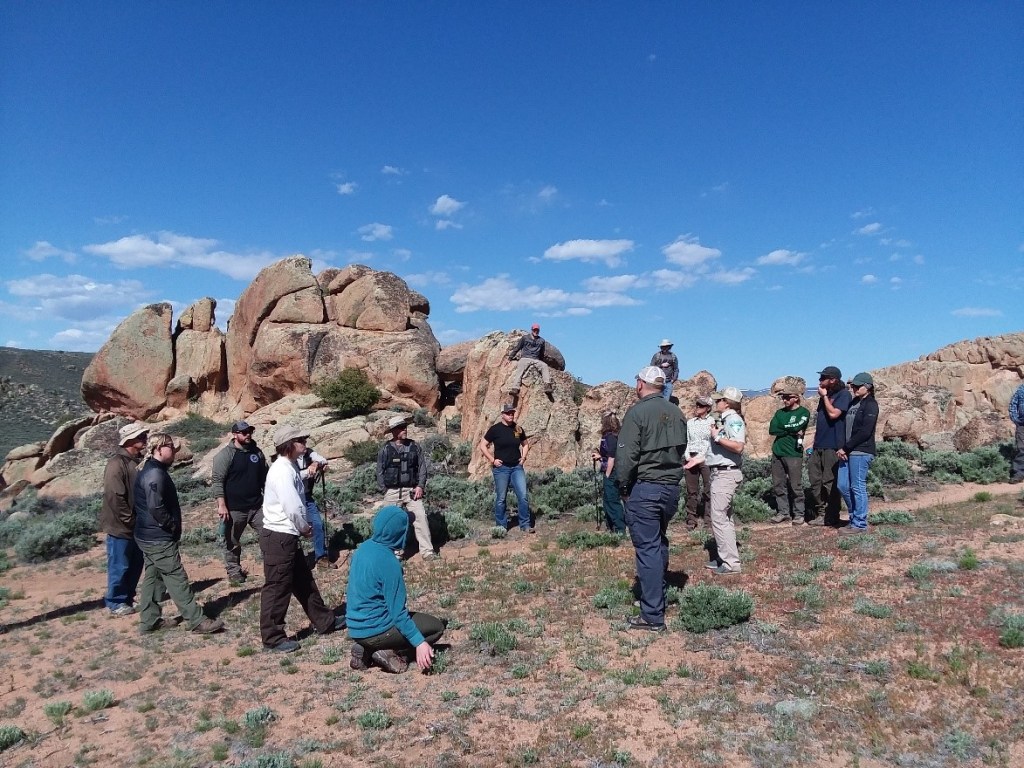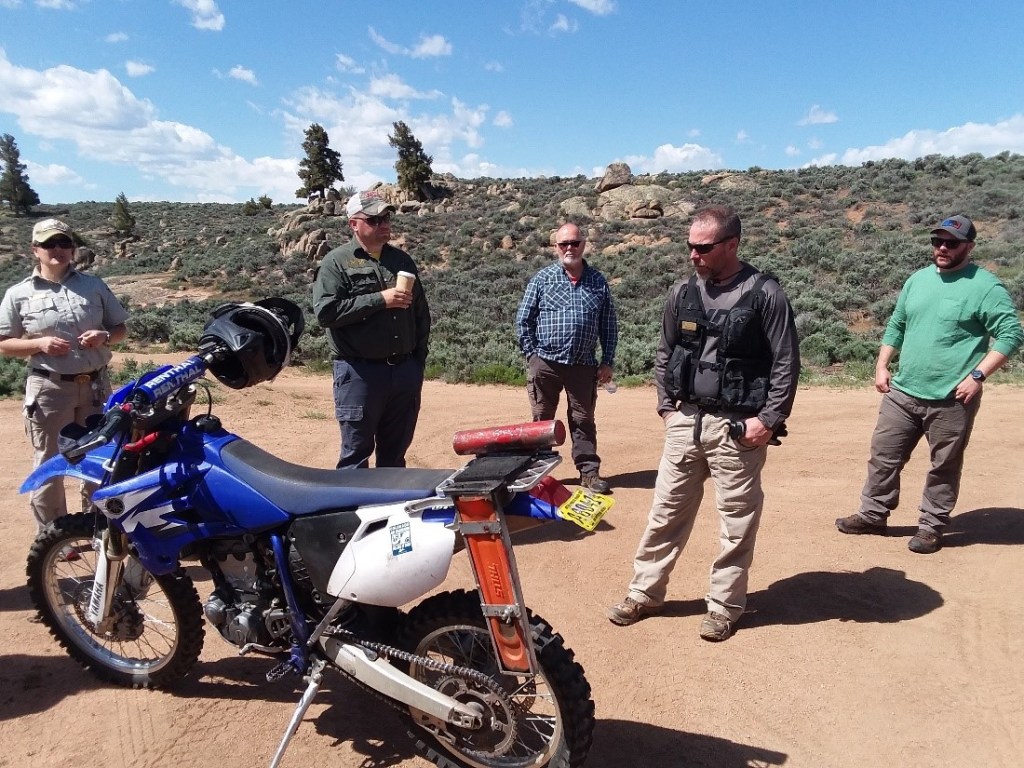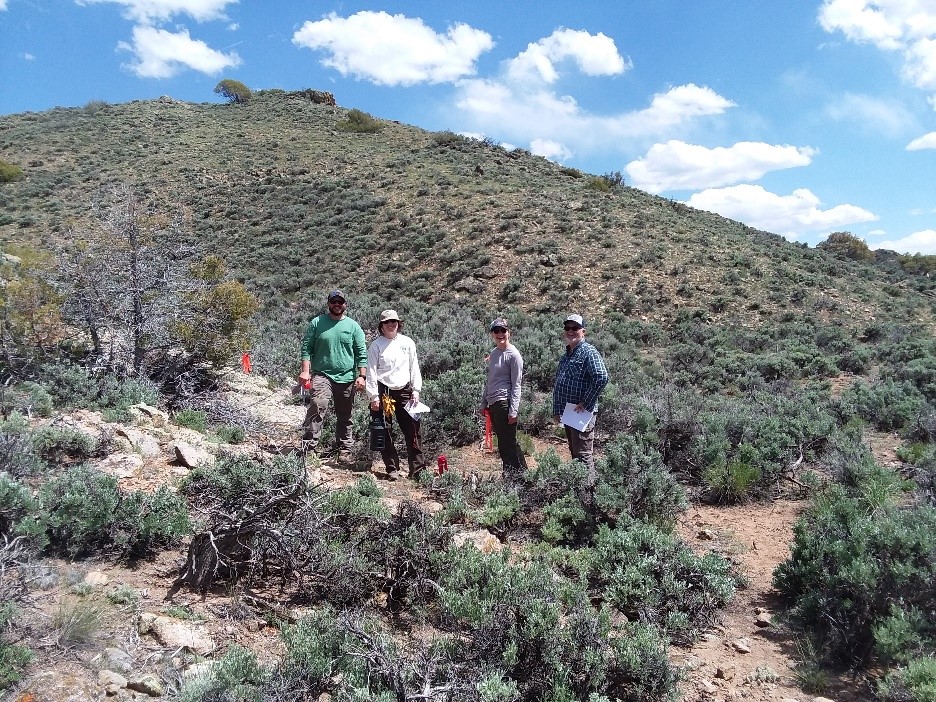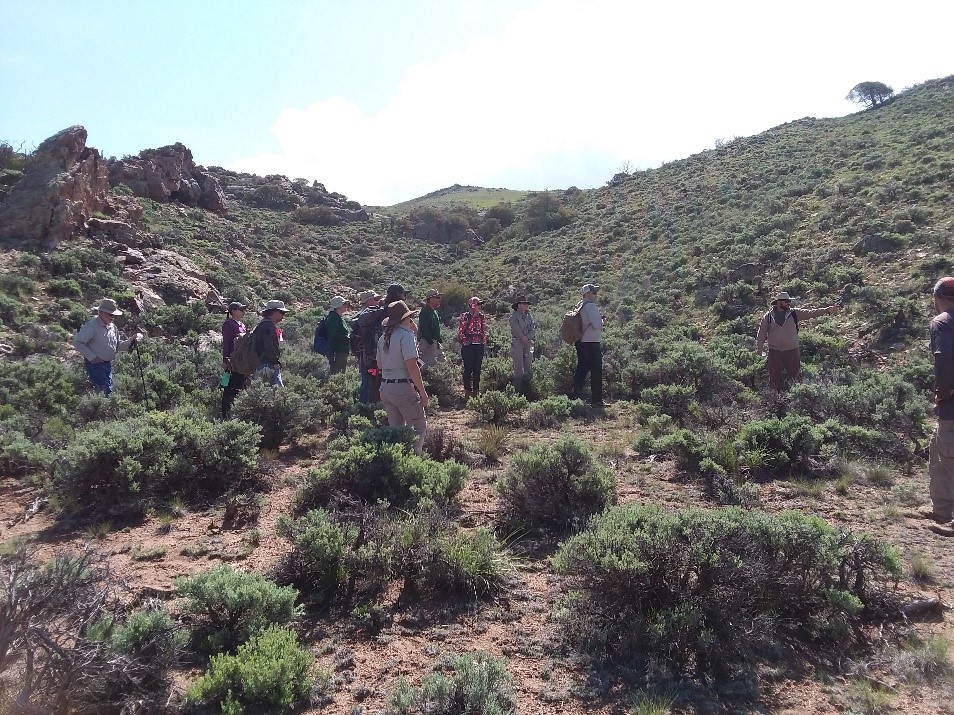NOHVCC staff traveled to Gunnison, CO last month to host its most recent Great Trails Workshop. The workshop series focuses on the design, layout, construction, maintenance and management of sustainable OHV trails and emphasizes hands-on field training. Typically, participants include trail managers; trail construction and maintenance supervisors and crews; engineering staff involved in trail planning, design, maintenance and construction; trail contractors; OHV club trail volunteers; and other interested stakeholders.
If you have ever wondered if a Great Trails Workshop might be something you would like to bring to your area but haven’t been too sure of what a workshop entails – this article should help.
Day One
On the first day workshop participants gathered at the meeting location in a local rec center and were welcomed with coffee, bagels and doughnuts. To kick things off NOHVCC staff went over some ground rules and housekeeping matters before taking time to have everyone introduce themselves. Once the preliminaries were finished, the day of presentations and small-group activities kicked off with a couple presentations by NOHVCC staff titled “What Makes a Great Trail Great,” and “OHV Management and Planning Fundamentals.” Next up was a quick discussion about Travel Management Objectives (TMO) and why they are necessary. Following the discussion participants broke into smaller groups and were provided trail scenarios for which they developed TMOs. Once finished the full group reconvened and discussed the TMOs they created.
After returning from a quick break, participants were provided a presentation titled Engineering 101. This important presentation lays out the foundation on which providing great trails is based. Also importantly, the presentation preceded lunch, which was provided for attendees.
After lunch the participants once again broke into small groups for an exercise. This time participants were provided a map of an actual OHV area minus the existing trails. They were given some management direction by NOHVCC staff and were asked to apply the principles they had already learned to draw a trail system on the map. Once again, after completing work, the larger group reconvened to discuss how each small group arrived at their decisions.
The afternoon session consisted of presentations on trail planning, sustainability, layout and design and trail maintenance programs. The final small-group discussion entailed each group being provided a real-world trail scenario including pictures and coming up with management solutions to present to all participants.
Day Two
The second day of the Great Trails Workshop started at the trailhead of nearby Hartman Rocks OHV Area. Participants were met by Megan Mast, Recreation Park Ranger, Bureau of Land Management, Gunnison Field Office, Gunnison, CO. She explained the history of the area, the types of uses accommodated, the area map and other ways managers communicate with the public. From there participants were provided a tour of the area with lots of stops along the way to highlight effective existing management techniques as well as for Megan to point out an issue or two which allowed participants to discuss potential management solutions.
As often happens at Great Trails Workshops an opportunity for discussion presented itself organically. One of the participants was riding a dirt bike from stop to stop and other participants noticed he had fabricated several unique mounts for trail maintenance tools. So, everyone gathered around the dirt bike and its owner explained his chainsaw, handsaw, hard hat and other mounts.
Once again, lunch was provided – only this time it was served in the field at a campsite.
The remainder of day two was dedicated to the small groups flagging portions of a trail. NOHVCC staff provided a management corridor and asked each group to apply the techniques they had learned to physically walk the area and flag connecting portions of a hypothetical trail. Participants quickly found out that real-world situations present challenges that could not be replicated in a classroom session. Each group was asked to include a challenge feature in their section of trail and to ensure that the trail would be suitable for novice riders. This proved tough, but each group communicated well and sought out features like those that had been highlighted in the classroom sessions, as well as looking for opportunities for grade reversals and to drain water.
Day Three
Day three began back at Hartman Rock Recreation Area. Once again participants broke off into their separate groups to put any finishing touches on the trail they flagged the day before. Ultimately everyone convened at the start of the flagged route and walked its entire length while discussing why they chose to locate it where they did and to ask questions of NOHVCC staff and other workshop participants.
Finally, the participants were provided one last lunch and took time to review the material they covered over the last several days. Before wrapping up, attendees were invited to provide feedback on all the classroom and outdoor sessions and to make recommendations for ways NOHVCC could improve on Great Trails Workshops.
Wrap Up
The Gunnison Great Trails Workshop was a success. Most attendees indicated that they learned a lot and are eager to implement their new knowledge at their home areas. Some of the participants had participated in previous iterations of workshops in Colorado and noted they planned to attend again in the future.
If you would like more information about the Great Trails Workshops and possibly hosting one in your area please contact NOHVCC staff at trailhead@nohvcc.org.

